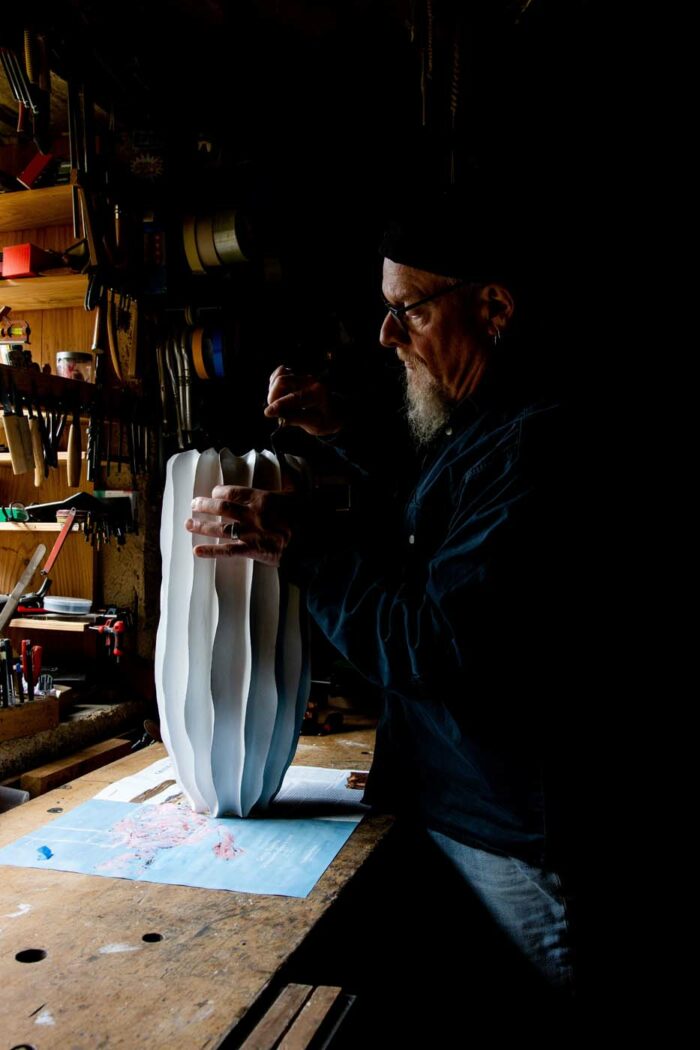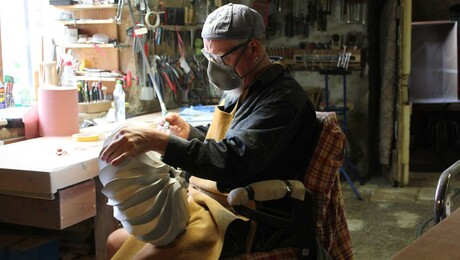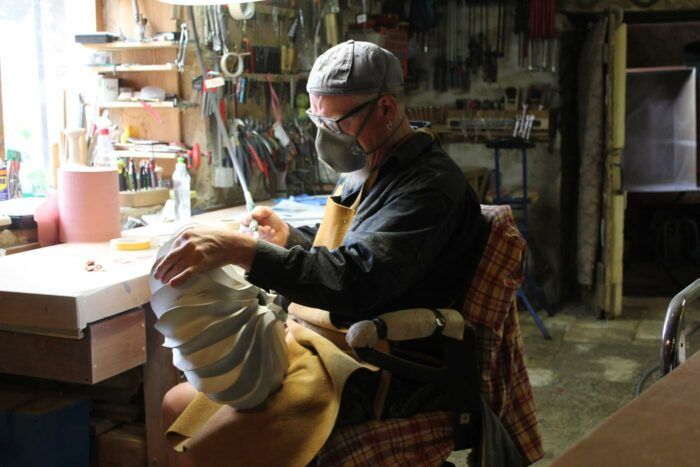From boyhood Marc Ricourt was fascinated by both woodwork and art. But after training and working as a carpenter for some years and then attending art school, he found himself unsurevwhat he would do. A book by
Richard Raffan taught him how to turn, and gradually his passions for art and handwork began to merge. Ricourt harvests beech and oak trees for his vessels from the hilly, forested land around the village where he lives in Burgundy, France. His pieces begin with chainsaw work, then move inside his shop, a former clog-maker’s stone workshop several centuriesold, which Ricourt restored. There, at the lathe, he defines the overall shape of a piece and hollows it.
Next comes power carving, and then, after an eight- or nine-month wait, sanding begins—his least favorite step, though extensive and essential—and finishing commences: bleaching, scorching, or treating with ferrous oxide, then
applying half a dozen coats of lacquer, each preceded by more sanding. Despite his affection for art, Ricourt is not inclined toward intellectual discourse about his work. His native languag is aesthetics: he speaks shape, texture, color. He is proud of his work, but his pride stems not so much from particular pieces he has made as from having found a way of life and work that he loves. “My grandfather used to say, ‘You’ll be rich when you are satisfied with
what you have.’ I think that’s a beautiful philosophy.”

Fine Woodworking Recommended Products

CrushGrind Pepper Mill Mechanism
Matt Monaco designs his pepper mills to accept the CrushGrind mill mechanism, which he likes because it doesn’t require drilling through the top of the mill’s cap and having hardware exposed on top.

Suizan Japanese Pull Saw
A versatile saw that can be used for anything from kumiko to dovetails. Mike Pekovich recommends them as a woodworker’s first handsaw.
Sign up for eletters today and get the latest techniques and how-to from Fine Woodworking, plus special offers.


